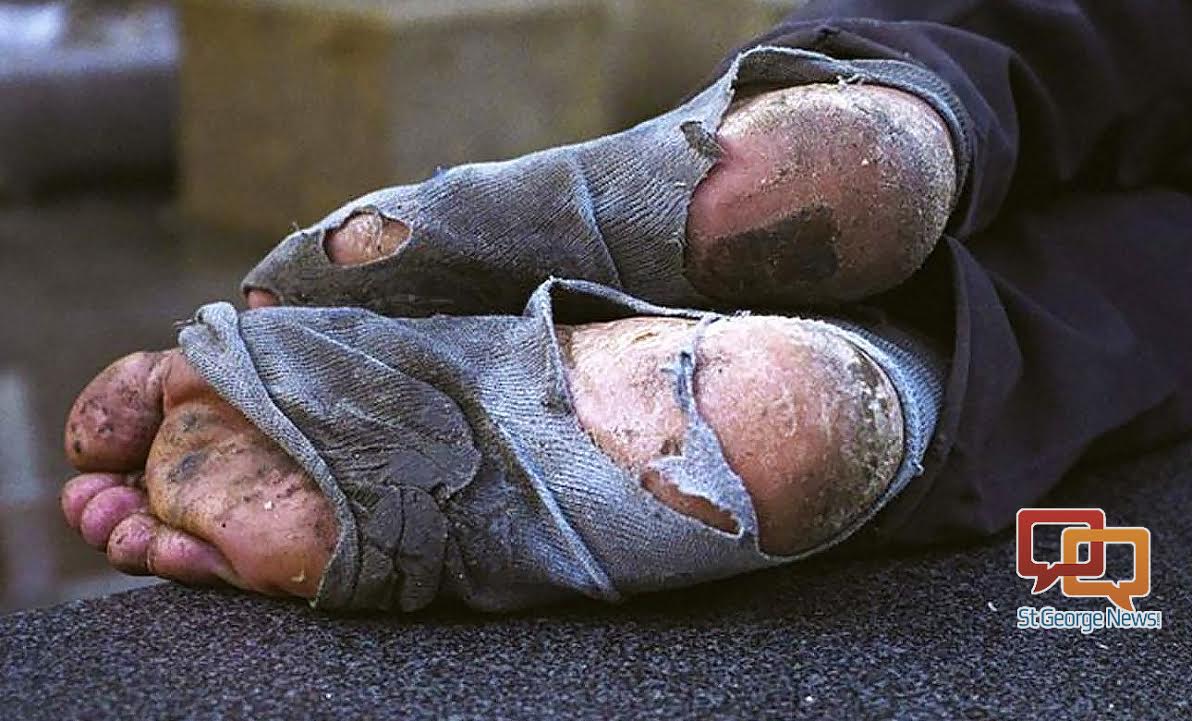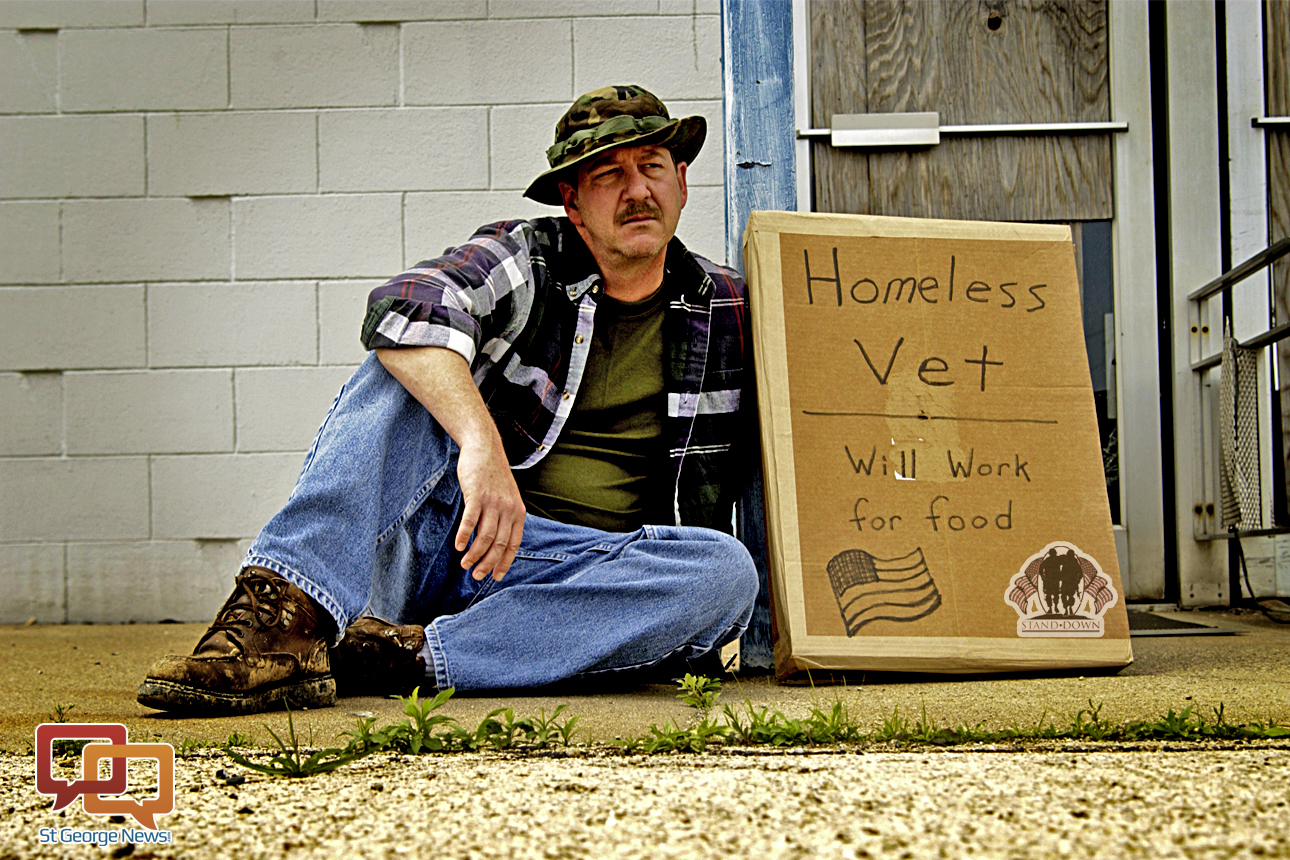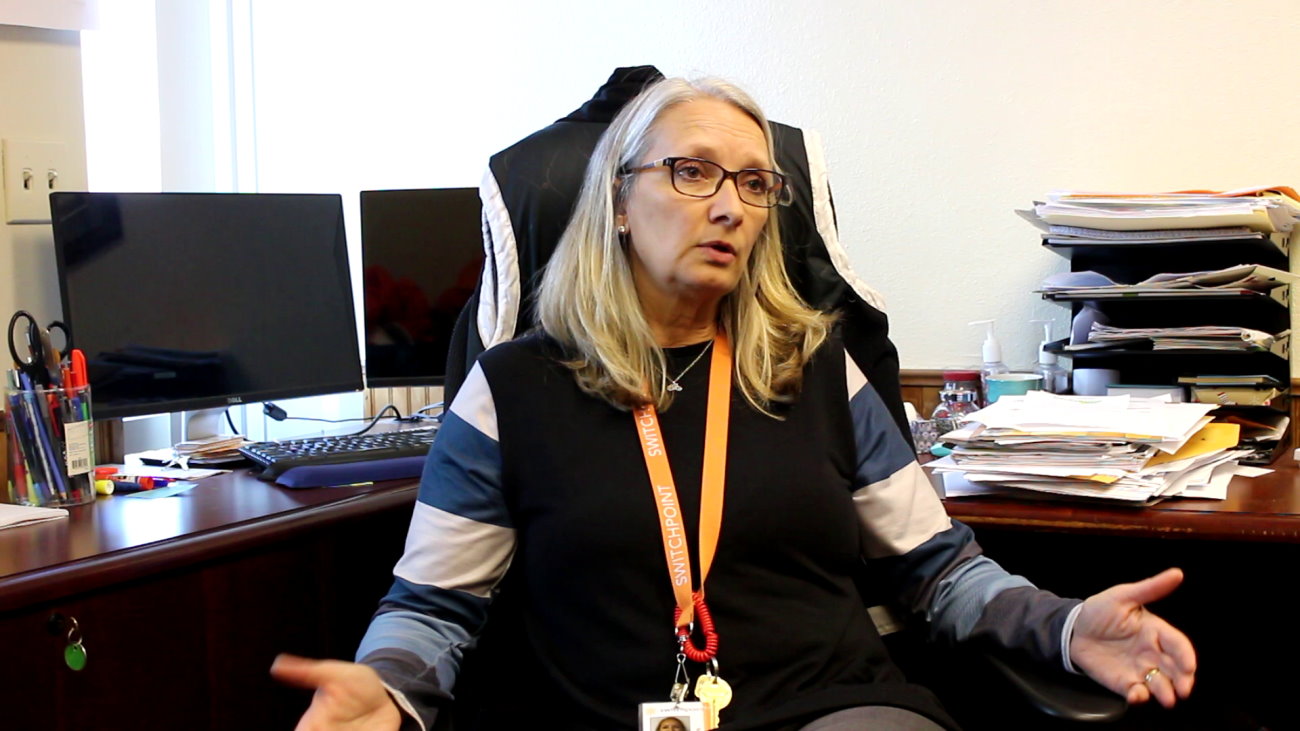
ST. GEORGE – An annual overnight count of Utah’s homeless population in January shows the amount of individuals experiencing homelessness remained much the same between 2017 and 2018. However, the number of those counted as “unsheltered” increased in Washington County and areas in and around Iron County, according to a report released last week.
The overnight count of the state’s homeless, known as the point-in-time count, was conducted Jan. 24. The results were published Aug. 8 in a report from the Utah Department of Workforce Services. According to the report, there were 2,876 homeless individuals across the state who were categorized as homeless – just 11 more than last year’s numbers.

“We’re pleased that the latest data shows that we are making progress in our goal for homelessness to be rare, brief and nonrecurring,” said Jonathan Hardy, director of the Housing and Community Development Division of Utah Department of Workforce Services.
The majority of the individuals counted were considered “sheltered,” or living in a shelter or transitional housing. However, 420 were classified as “unsheltered,” meaning they were sleeping on the street, in a car or some other place not meant for human habitation. This number is up from 291 in 2017.
Washington County experienced an increase of 98 unsheltered individuals this year over last, making for a total of 154, according to the report. The total number of both sheltered and unsheltered homeless individuals in Washington County is 245, according to the report, which is up from 2017’s count of 133.
For the area of Iron County – which also includes counts from Beaver, Garfield and Kane counties – the total amount of homeless individuals was 42, with 10 counted as unsheltered. This is an increase from 29 persons and no reported unsheltered in 2017.
Read more: Switchpoint conducts homeless survey count to distribute assistance
There are a couple of reasons for the increase, said Carol Hollowell, executive director of the Switchpoint Community Resource Center.
Some of the increase may be due to the dispersal of homeless individuals from Salt Lake City caused by Operation Rio Grande, Hollowell said. Switchpoint also tried a new way to count the homeless in the community that helped bring out more people.

“We did something different, and that’s where those numbers come from,” she said.
Switchpoint, which serves as a shelter and resource center for the homeless and those in need, held a health fair for individuals Hollowell called “service-resistant clients,” or those who choose to stay on the street due to a general distrust of any institution. The health fair helped draw in extra numbers of homeless people during the annual count, allowing them to get basic health needs met without having to get too deeply involved in Switchpoint or another institution.
Hardy told the Deseret News last week that the increases noted in the point-in-time count report could be attributed to “better counting efforts” in various counties across the state and said he didn’t see the higher numbers as overly concerning.
Southwest Utah has a more inviting climate in winter as opposed to those in northern Utah, Hollowell said, which is also considered a possible factor in the county’s high numbers of unsheltered individuals.
The count-in-time report also found nearly half of individuals in an emergency shelter stay for a week or less, and only 5 percent stay for longer than six months. Families generally take a little bit longer to find housing, with 51 percent moving out of emergency shelter within a month.
At Switchpoint, where multiple beds are spread across 12 rooms housing both individuals and families, Hollowell said the average stay is around 25 days. She said Switchpoint has no limit on how long a client can stay as long as they show they are working toward self-sufficiency.

Of the 420 unsheltered individuals counted across the state, 184 were adults with mental illness, 176 were adults with substances abuse disorders, 87 were chronically homeless, 74 were survivors of domestic violence, 34 were youth under the age of 24 and 17 were veterans.
In Washington County, the report counted 52 adults with mental illness, 70 adults with substance abuse disorders, 13 individuals who were chronically homeless, 12 survivors of domestic violence, 14 youth under the age of 24 and less than 10 veterans.
The report also showed a decrease in individuals experiencing homelessness for the first time. The reported describes these individuals as “persons entering emergency shelter, transitional housing, or permanent housing programs who did not have entries in emergency shelter, safe haven, transitional housing, or permanent housing projects in the previous 24 months.”
Between Oct. 1, 2016, and Sept. 1, 2017, 10,133 people across Utah experienced homelessness for the first time. This is a decrease of 732 compared the prior October 2015-September 2016 period.
The topic of affordable housing and Utah’s shortage thereof was also touched on in the report. Having affordable housing would help relieve pressure on the homeless system in the state for those who can’t afford rent, the report states.
“Affordable rent, as defined by (the U.S. Department of Housing and Urban Development), is 30 percent of income. The average fair market rent in Utah for a two-bedroom apartment, as established by HUD for 2018, is $924 per month,” according to the study.

“The hourly wage needed to afford that rent was $17.77 per hour, but the average renter wage was $13.92 per hour.”
The average fair market rental cost in the St. George area is $862, according to the report.
Since 2016 Switchpoint has been moving forward on an affordable housing project in the area of East Riverside Drive behind Millcreek High School. Called the RiverWalk Village apartments, the project will offer a mix of one-, two-, three- and four-room apartments.
Hollowell said she anticipates the project will break ground in a few months.
Read more: Affordable housing project moves forward
Resources
Email: [email protected]
Twitter: @MoriKessler
Copyright St. George News, SaintGeorgeUtah.com LLC, 2018, all rights reserved.
This is sad it’s ridiculous the wage doesn’t match housing costs. When I first moved here in 2000 my rent for a 3bd 2 bathroom 4-plex was 550.00 my wage was 8.00 an hour for office manager it was low wage even back then.
I agree, the wages here in Southern Utah are awful, rents just keep rising, and housing becomes more unaffordable each day.
Well, these people need to “pull themselves up by their bootstraps” and get a job. Working for minimum wage and living in a cardboard box in an alley or in the back of a dilapidated 1980s van is much better than the alternative, and that alternative is SOCIALISM! Everyone has to do their part to fight creeping socialism, and if it involves living in a cardboard box or an old van these people are “true AMERICAN heroes”. We’ve got to fight the evils of SOCIALISM, people!
Explain your understanding of “SOCIALISM”. Why wouldn’t we help the neediest in our society? Conservatives are heartless until it affects them.
What comments is saying is, that by being on the street, they are not giving in to this messed up economy that we are forced to endure down here. People that pay the insane prices for rent/owning a home,
this enables the greedy fat cats, to continue their dirty game. It comes down to supply and demand. So, yeah it does actually have kind of a socialistic feel to it. However this does not exactly apply to the homeless around here. They are in this position more by circumstance (their own fault or not their fault). However, I think next to none of them are in this position purely for the purpose of “giving the man the finger” so to speak.